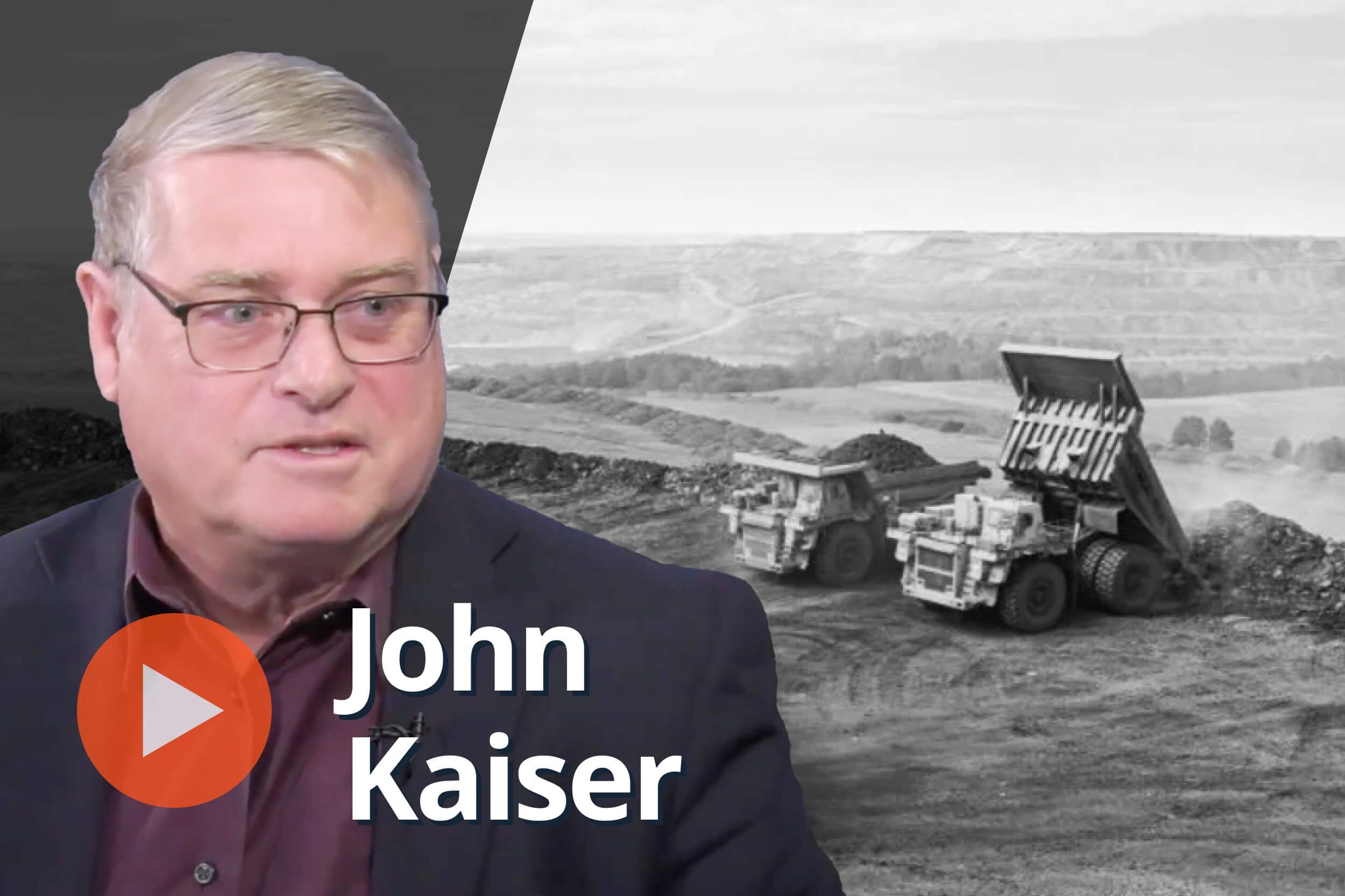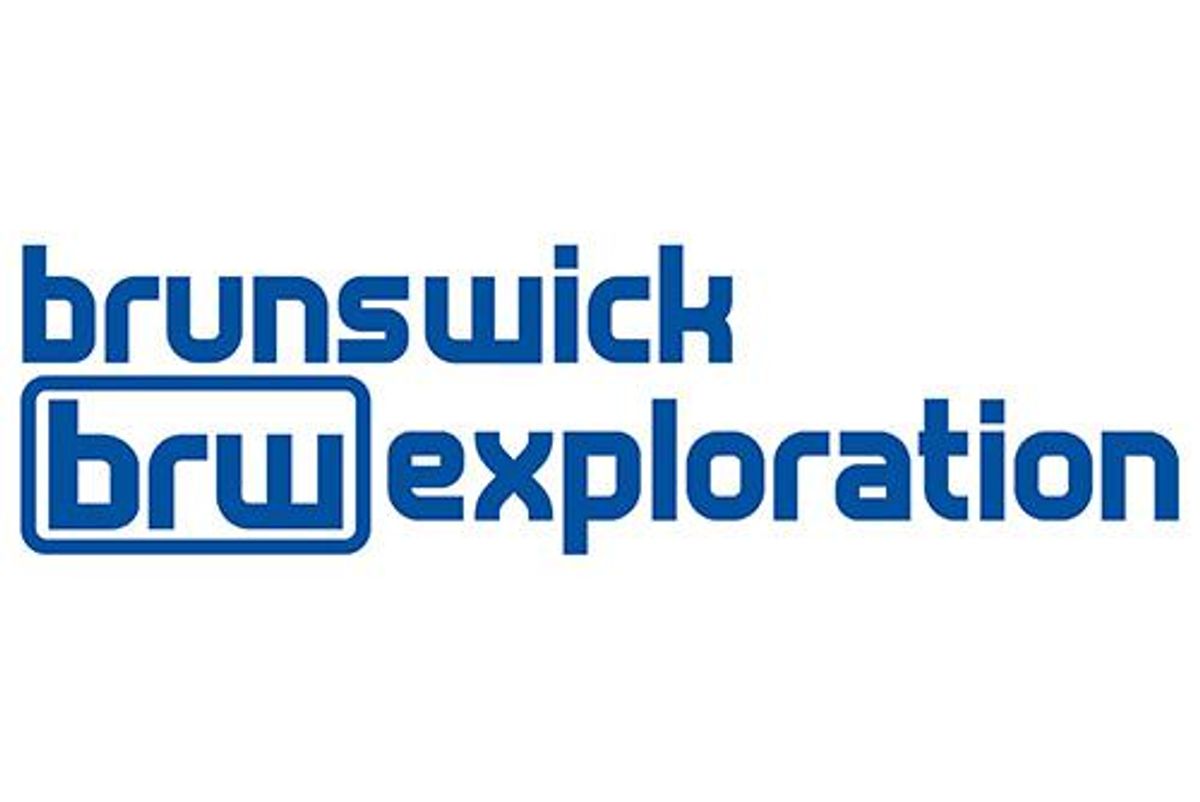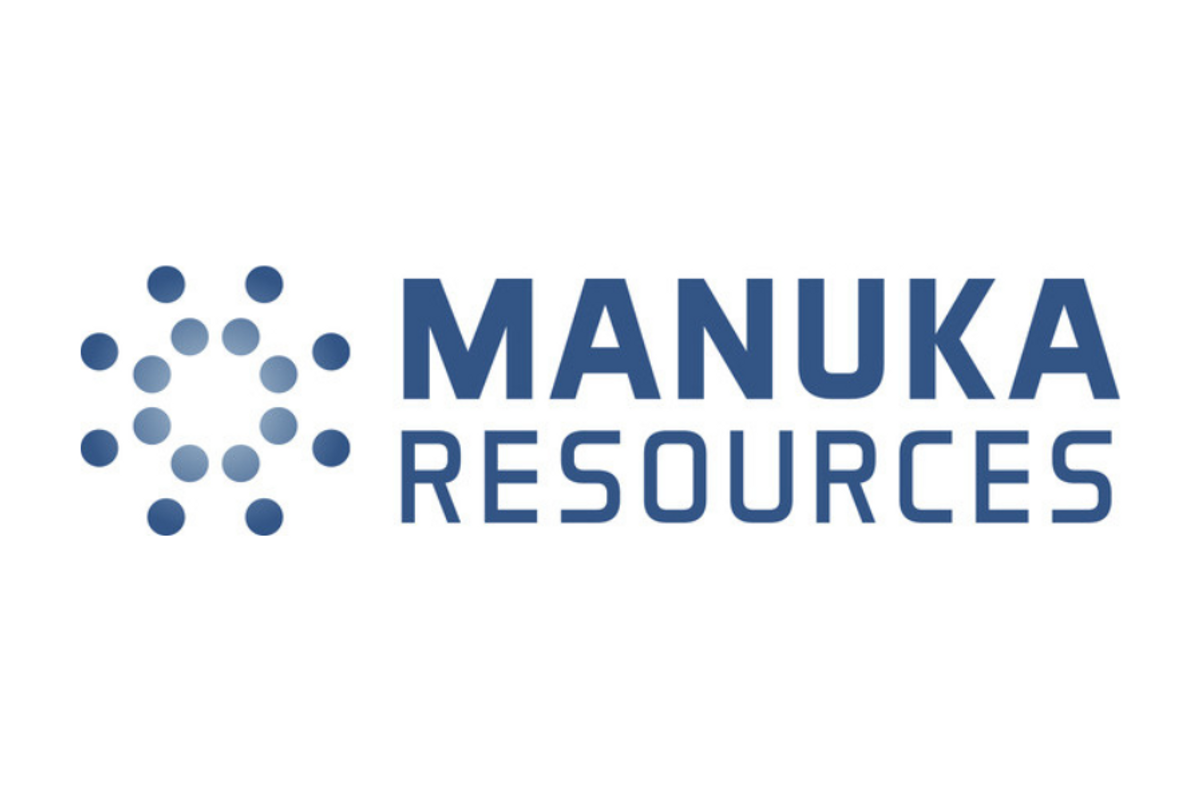
October 28, 2024
Manuka Resources Limited (“Manuka” or the “Company”) is pleased to announce a Maiden Ore Reserve (under its ownership) of the Wonawinta Silver Mine (“Wonawinta” or the “Project”), located 80km due south of Cobar in New South Wales (Figure 1). The Ore Reserve and associated Implementation Plan provides the Company with a clear production pipeline and pathway toward a dual precious metals revenue stream from two operating assets in the Cobar basin, namely Mt Boppy Gold Mine and Wonawinta.
Highlights
- The Wonawinta Silver Mine and Processing plant is a highly strategic asset located within the prolific Cobar Basin, NSW, and owned 100% by Manuka Resources Limited.
- Wonawinta is the only primary silver Reserve in Australia with all mining approvals current and intact, and process plant fully constructed - Wonawinta was producing silver for Manuka as recently as late 2022.
- Ore Reserve of 4.8Mt1 at 53.8g/t Ag containing 8.4Moz of silver comprising:
- Proved Ore Reserves of 0.8Mt at 50.8g/t Ag; and
- Probable Ore Reserves of 4.1Mt at 54.3g/t Ag.
- Ore Reserve is based solely on shallow (<40m deep) oxide material.
- Total Wonawinta Resource comprises 38.3Mt at 41.3g/t Ag for 51Moz of silver (ASX release 1 April 2021).
- The Ore Reserve and associated Implementation Plan will be used to assess the potential to take Wonawinta out of active care & maintenance and recommence silver production.
- Manuka is currently focused on the restart of a high-margin operation at its 100% owned Mt Boppy Gold Project located 50km east of Cobar and progressing approvals for its world-class vanadium rich irons sand project located in the Southern Taranaki Bight, New Zealand.
Manuka’s Executive Chairman, Dennis Karp, commented:
“Manuka’s Maiden Silver Ore Reserve and the preparation of an Implementation Plan for Wonawinta represents a major milestone for the Company and supports a potential of restarting silver mining and processing operations in the future. Our process plant at Wonawinta has been kept in excellent condition and on active care & maintenance since the processing of gold from stockpiles hauled from Mt Boppy, ceased in February 2024 and therefore stands ready to come back online at short notice.
The prospect of restarting Wonawinta provides the Company with excellent optionality on silver and the potential to take advantage of the very buoyant precious metals prices and broader strategic opportunities within the Cobar Basin. We look forward to providing further updates to the market as our strategy progresses.
Summary
Wonawinta was built by Cobar Consolidated Resources (“CCR”) in 2011 and acquired by Manuka in 2016. The Project comprises a granted mining lease, existing open pits mines, an existing 1Mtpa CIL process plant and associated infrastructure including approved tailings dams and accommodation facilities (Figures 2 – 4). Whilst limited silver production was undertaken by Manuka in 2022, the Wonawinta plant has primarily, and as recently as December 2023, been used by Manuka to produce gold doré from ore hauled from the Mt Boppy gold mine.
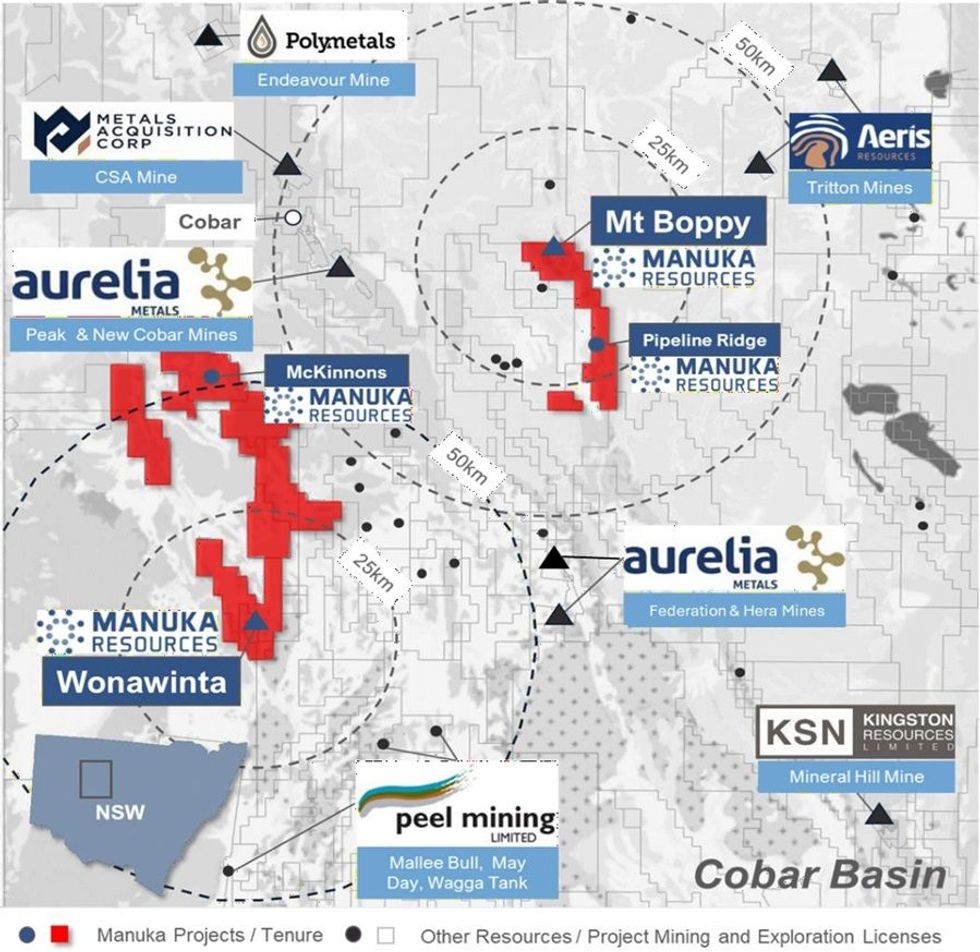
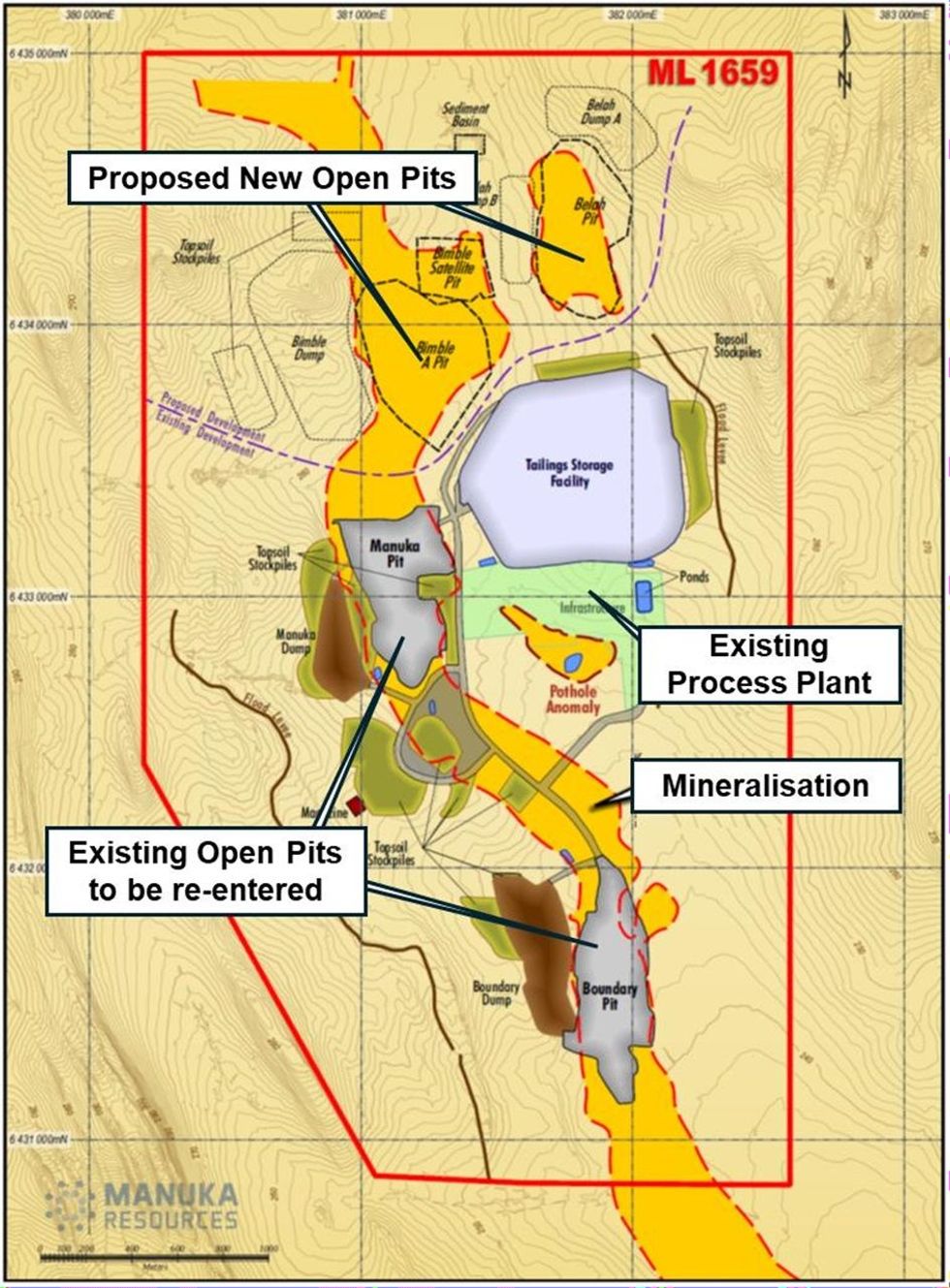
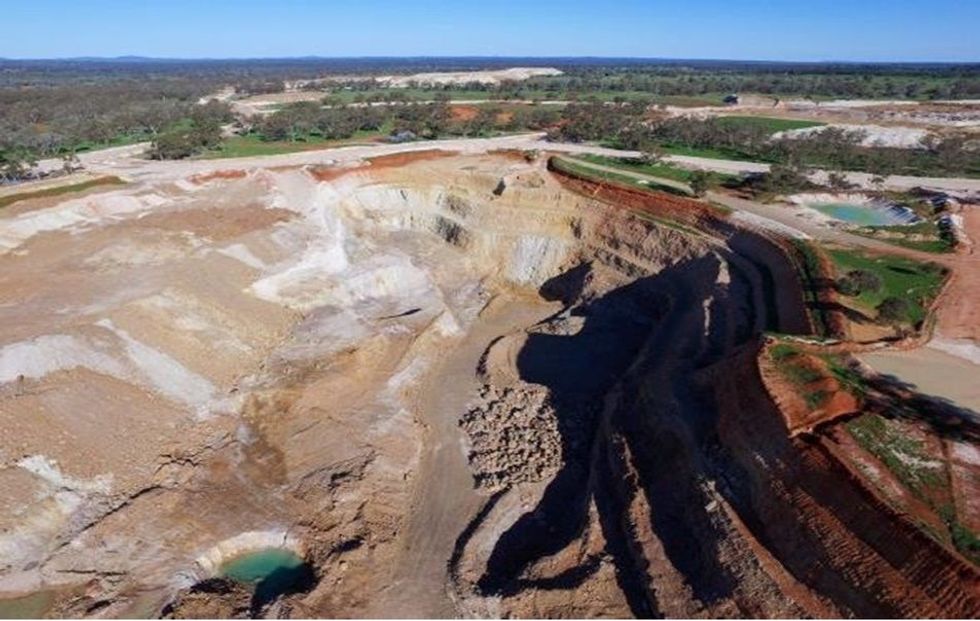
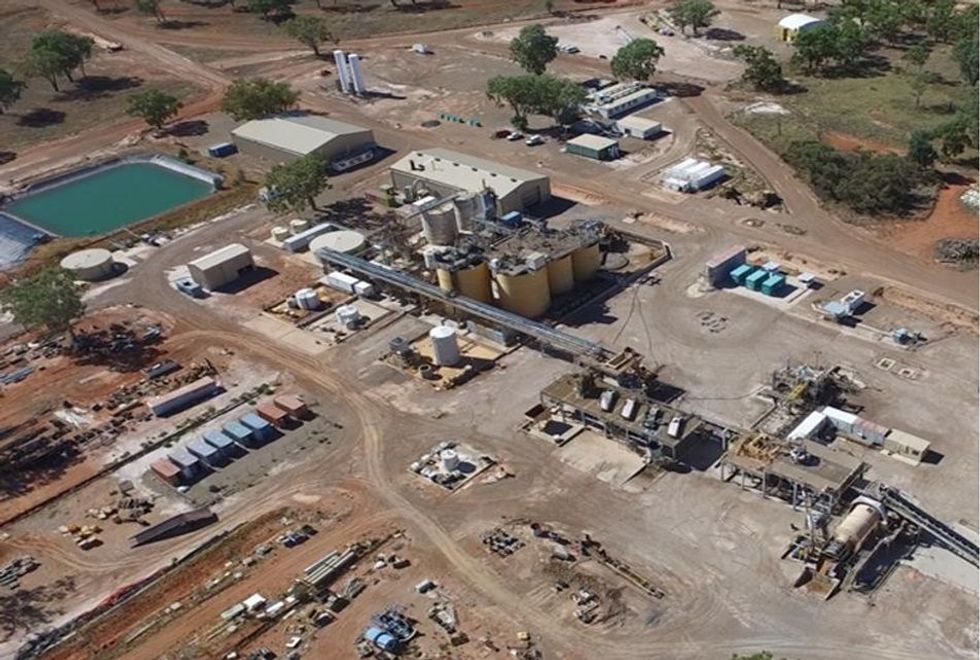
The current Implementation Plan proposes the mining and processing of 4.8Mt of Ore at a grade of 54g/t Ag over 4.5 years for the recovery of 5.8Moz of silver. Capital Costs for taking the mine out of care & maintenance and recommence production are estimated to be A$3.7M plus A$12.4M in pre-strip mining. Based on the current silver forward curve and an All-In Sustaining Cost of A$40.51/oz, the mine plan would deliver operating cash flows of ~A$100M based on the Ore Reserve alone.
As the price and demand outlook for silver continues to develop, Manuka will continue to refine its economic model for the Project and look to further optimise the mining schedule and reduce pre-production mining costs ahead of a decision to commence the restart of operations.
Click here for the full ASX Release
This article includes content from Manuka Resources Limited, licensed for the purpose of publishing on Investing News Australia. This article does not constitute financial product advice. It is your responsibility to perform proper due diligence before acting upon any information provided here. Please refer to our full disclaimer here.
vanadium investingsilver investingiron investinggold stocksasx stocksgold explorationgold investingasx:mkr
MKR:AU

Sign up to get your FREE
Manuka Resources Investor Kit
and hear about exciting investment opportunities.
- Corporate info
- Insights
- Growth strategies
- Upcoming projects
GET YOUR FREE INVESTOR KIT
The Conversation (0)
26 March
Manuka Resources
Investor Insight
Manuka Resources’ unique value proposition is focused on its three fully licenced projects, which include two precious metals assets in one of Australia’s most prolific regions for base and precious metals, and a company-making iron sands (vanadium and titanium co-products) project in New Zealand’s exclusive economic zone (EEZ) off the Taranaki bight. Manuka Resources is well-placed to deliver significant shareholder value, driven by a phased strategy that includes a clear pathway to near-term precious metals production.
Strategy Overview
Manuka Resources (ASX:MKR) is focused on bringing its precious metals assets in the Cobar Basin into production, as well as progressing its New Zealand domiciled Taranaki VTM iron sands project.
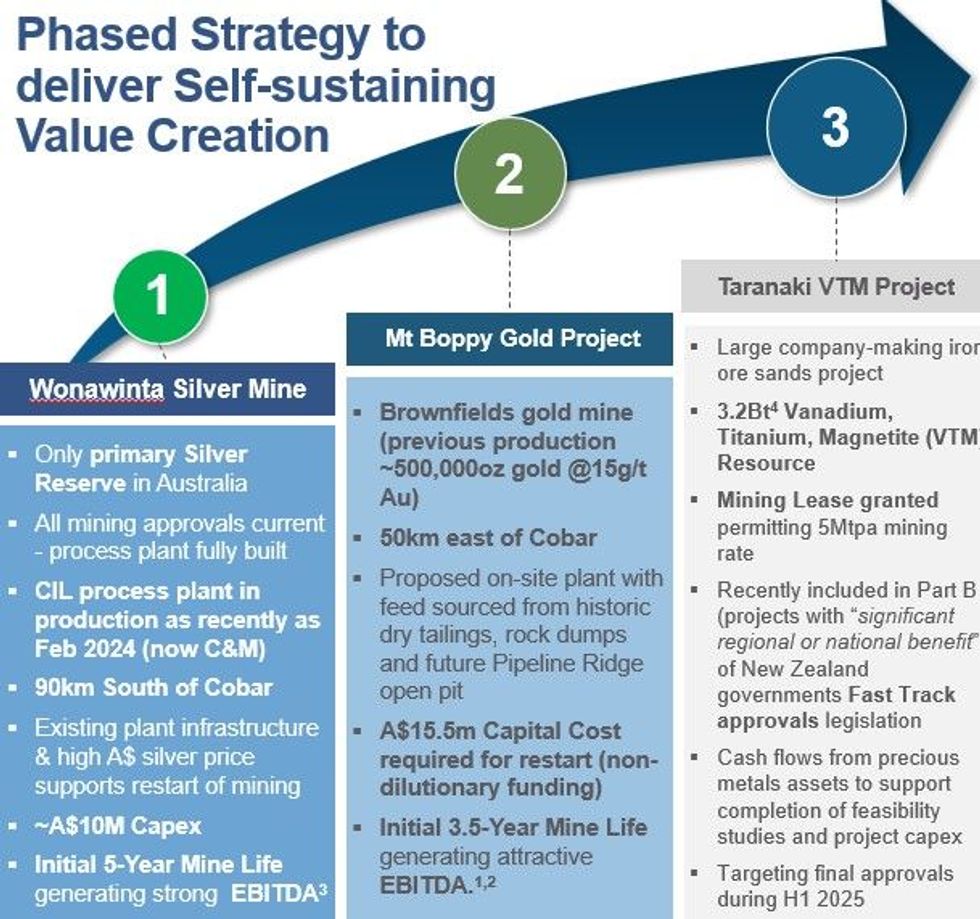
The company previously revealed a phased strategy focused on delivering maximum value to its shareholders. The first phase focused on bringing back the Mt Boppy gold mine into production and it released an optimised production plan for the mine restart. At the time, the company believed silver production would follow gold but noted it was flexible in this regard. In any event and simultaneous to this, will be the ongoing development of the Taranaki vanadium titano-magnetite (VTM) project.
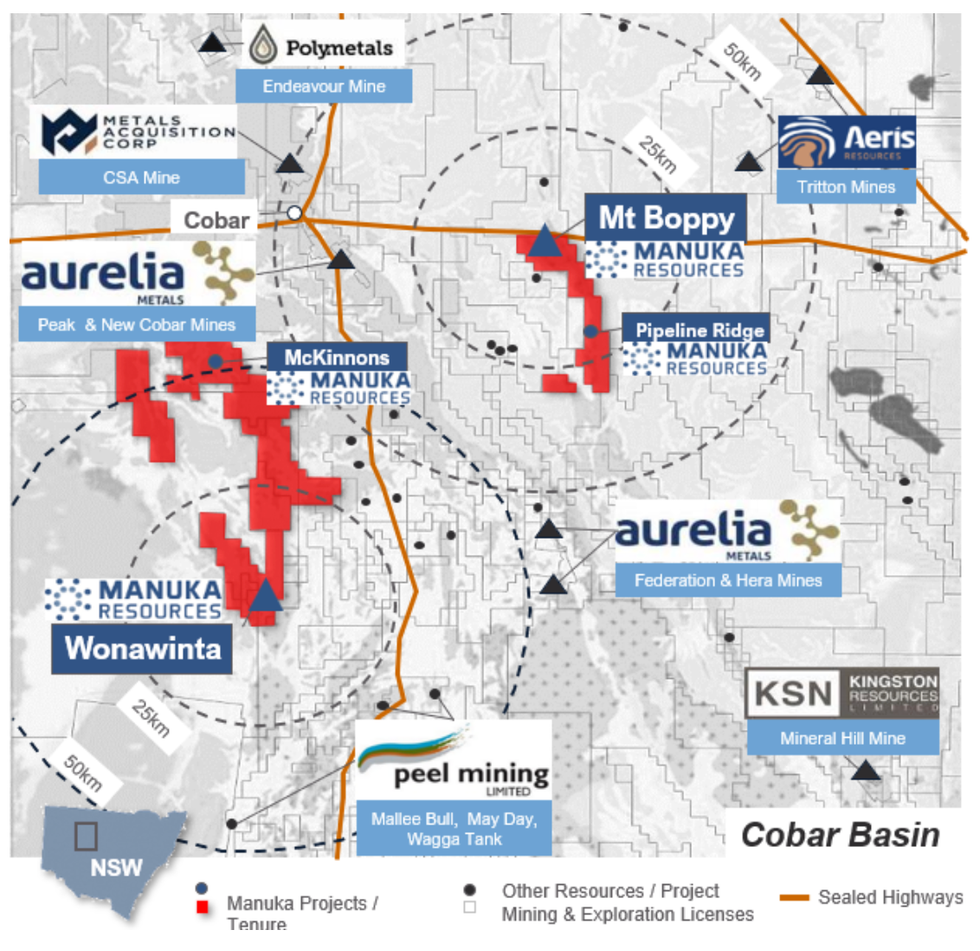
The Cobar Basin located in the central-west of New South Wales, is one of the richest mining provinces in Australia, home to some of Australia’s largest mining companies and explorers.
The Mt Boppy gold mine was historically one of the richest in NSW, Australia and produced ~500,000 oz gold at an average grade of 15 grams per ton (g/t) gold. Accordingly, the company is very excited about its exploration potential.

Drone image looking South showing the main components of the Rock Dump and tailing resources in relation to the Mt. Boppy open pit.
The initial five-year mine plan is largely focused on the screening and processing of gold-bearing waste material above ground on the Mt Boppy mine site. The company had been processing these wastes from June 2023 to December 2023 at its Wonawinta plant and now will look to optimize the process.
The Wonawinta silver project will be the largest primary silver producer in Australia and expected to be back in silver production within 12 months. Manuka has released a maiden ore reserve (under its ownership) of 4.8Mt1 at 53.8g/t silver containing 8.4Moz of silver comprising proven ore reserves of 0.8Mt at 50.8g/t silver; and probable ore reserves of 4.1Mt at 54.3g/t silver. Ore Reserve is based solely on shallow (<40m deep) oxide material.

The Wonawinta 100tph Ball Mill
The gold and silver market appears to be in an upward trend, with prices for both precious metals hitting their all-time highs recently, in Australian dollar terms for silver, which bodes very positively for MKR.
Company Highlights
- Manuka Resources is an ASX-listed mining company focused on producing gold and silver from its two 100 percent owned fully permitted projects (one gold and one silver) in the Cobar Basin in New South Wales, Australia.
- In addition, MKR’s wholly owned subsidiary Trans-Tasman Resources Limited (“TTR”) is the owner of the Taranaki VTM (vanadiferous titanomagnetite) iron sands project, located in the New Zealand EEZ, off the south-west coast of the north island.
- Manuka released the details of the Taranaki VTM project’s pre-feasibility study (PFS) on 26 March 2025, which highlights the extremely robust economics of the project with an NPV10 of US$1.2B and IRR 39 percent
- TTR will also be lodging its application under New Zealand’s Fast Track Approvals Act for the Taranaki VTM project imminently. (The project was included in Schedule 2 of the Act). Successful conclusion of review under the Fast Track pathway will result in final regulatory approvals (marine discharge consent) being granted, completing the full suite of consents to operate the project for 20 years.
- The Company’s primary focus for its precious metals assets is on bringing both the fully permitted Wonawinta silver project and the Mt Boppy gold mine back into production during 2025. The Wonawinta processing plant (primarily constructed for silver production in 2012 with production capacity of 850,000-1 million tpa) has been recently used for both gold and silver processing and is on active care and maintenance for rapid restart..
- The Wonawinta silver project was previously the largest primary producer of silver in Australia, and Manuka expects this to again be the case once production restarts.
- While the substantially higher gold prices have been securing headlines over the past six months, it is worth noting that the silver price is also trading at an all time high which makes restarting the project very attractive (the all time high for silver is against the Australian dollar, currently silver is around AU$54/oz silver).
- Manuka released its maiden silver reserve in October 2024 making it the only production ready silver reserve on a project based in Australia.
- Elevated gold and silver prices should materially benefit Manuka Resources, resulting in strong profitability and cash flows once its projects move into production.
Key Projects
Mt Boppy Gold Project

The Mt Boppy gold project comprises three mining leases, four gold leases and one exploration license, spanning an area of more than 210 sq km in the prolific Cobar Basin in New South Wales, Australia. The project was acquired by Manuka in 2019 and has a current mineral resource of 4.3 Mt at 1.19 g/t gold. This includes a combination of oxidized and transitional/fresh mineralization in the ground, as well as mineralized rock dumps and tailings.
Historically, Manuka Resources has processed its stockpiles and gold mineralized waste products through its Wonawinta processing plant. However, inefficiencies associated with trucking and processing ore at the distant Wonawinta plant has led the company to revise its strategy. It is now looking to construct a processing plant at Mt Boppy so that ore from the mine can be processed on-site. Mt Boppy has excellent infrastructure including a 48-person mine camp and is fully permitted for the proposed processing plant and on-site production.

The updated mineral resource comprises 4.28 Mt at 1.19 g/t gold for 163 koz of contained gold, of which 82 percent is in the measured and indicated categories.
An on-site plant will offer significant cost savings and improve the project economics.
Manuka Resources anticipates Mt Boppy to deliver total EBITDA of >AU$90 million and cash flow of >AU$80 million over a five-year mine life.
Wonawinta Silver Mine Project

The Wonawinta plant
The Wonawinta project is fully permitted with all the necessary infrastructure, including an 850,000 to 1 million tpa processing plant. The plant has been used for processing ore from Mt Boppy. The Wonawinta silver mine is currently under care and maintenance. The company is considering the possibility of resuming operations at Wonawinta, leveraging the improved silver price environment. Manuka has released a maiden ore reserve (under its ownership):
- Ore Reserve of 4.8 Mt at 53.8 g/t silver containing 8.4 Moz of silver comprising:
- Proved Ore Reserves of 0.8 Mt at 50.8 g/t silver; and
- Probable Ore Reserves of 4.1 Mt at 54.3 g/t Ag.
The maiden silver ore reserve and the preparation of an implementation plan for Wonawinta support the potential restart of silver mining and processing operations in the near
future. The company is reviewing its silver restart plans in light of the current price increases and expects to announce a decision before the end of May 2025.
Taranaki VTM Project

The Taranaki VTM project is located within New Zealand's exclusive economic zone, approximately 22 to 36 kilometres offshore, outside the 12 nautical mile boundary from the coastline. The project boasts a JORC resource of 3.2 billion tons at 10.17 percent iron oxide, 1.03 percent titanium dioxide and 0.05 percent vanadium oxide. It holds a mining license allowing initial extraction of 50 million tons annually, resulting in 5 million tons of VTM concentrate per year for 20 years (concentrate grade of 56 to 57 percent iron, 8.5 percent titanium dioxide and 0.5 percent vanadium pentoxide). At this extraction rate, the JORC resource provides approximately 60 years of potential mining inventory.
The project was included in the New Zealand government's Schedule 2 of the Fast Track Approvals Act 2024. The next step for Manuka was to complete pre-feasibility study (“PFS”) on the project. This was released to the market on 26 March 2025 and presents an extremely robust economic outlook for the project as can be seen below.

Management Team
Dennis Karp – Executive Chairman
Dennis Karp is a former commodities trader with nearly four decades of corporate experience. He started his career in 1983 and worked in HSBC until 1997 before moving to Tennant, one of Australia’s largest physical commodities trading companies with operations in Asia and Europe. He was a principal shareholder of Tennant Metals until 2010 and a managing director until December 2014. He founded ResCap in December 2014. Since then, he has participated in diverse resource projects and investment opportunities across base metals and bulk commodities. He holds a Bachelor of Commerce from the University of Cape Town.
Alan Eggers – Executive Director
Alan Eggers has over 40 years of experience in the mining sector. He is a geologist and was the founder of Summit Resources, which became an ASX top 200 company and was acquired by Paladin Energy in 2007 for AU$1.2 billion. Throughout his career, he has held director positions at numerous companies. He holds a Bachelor of Science, Honours, and Master of Science degrees from Victoria University of Wellington. He is recognized as a fellow of the Society of Economic Geologists and holds memberships in AusIMM and the Australian Institute of Geoscientists.
John Seton – Non-executive Director
John Seton is a lawyer with extensive experience in the mineral resources sector. He has served as director in several ASX and NZX listed companies. He holds a Bachelor of Laws from Victoria University, Wellington, and a Master of Law (Honours) from the University of Auckland and is a chartered fellow of the New Zealand Institute of Directors.
Haydn Lynch – Chief Operating Officer
Haydn Lynch has over 25 years of experience in M&A, capital markets and private equity. He has been involved in executing several domestic and cross-border transactions in various sectors including metals and mining, and industrials. He has held leadership roles in global investment banks, including Bankers Trust Australia, Investec Bank, RBC Capital Markets and Southern Cross Equities. He has undergraduate degrees in mechanical engineering and economics from the University of Queensland and a Master in Commerce from the University of New South Wales.
Dieter Engelhardt – Chief Metallurgist and General Manager
Dieter Engelhardt has over 30 years of experience in the mining industry including roles as senior metallurgist at Telfer Gold Mine and Northparkes Mines, resident manager at McKinnons Gold Mine, and manager of ore processing at CSA Mine. Engelhardt was employed by Newcrest Mining (now Newmont) in various roles, including as manager of ore processing and principal metallurgist.
Phil Bentley – Chief Geologist
Phil Bentley has over 40 years of experience in the mining industry across New Zealand, South Africa, and Australia, holding senior geological roles as well as senior management and director positions. He has worked as a chief geologist at Randgold Resources and Randgold & Exploration, Global Head of Exploration at Trafigura Mining Services, and Principal Geologist Africa at CSA Global South Africa. He is a Qualified person under NI 43-101 (Canada) and JORC (Australia) and is a Fellow of the South African Geological Society. He holds a Bachelor of Science (Honours) in Geology at Victoria University of Wellington. He also has a Masters of Science in Economic Geology at Victoria University of Wellington and a Master’s of Science in Mineral Exploration from Rhodes University, Grahamstown South Africa.
Keep reading...Show less
Near-term production from both its silver and gold projects located in the Cobar Basin, Central West, New South Wales
05 August
Results of Fully Underwritten Entitlement Offer
31 July
June 2025 Quarter Activities and Cashflow Reports
10 July
Further Information to 26 June Announcement
08 July
$8 Million Fully Underwritten Entitlement Offer
1h
China-Linked Gold Syndicates Driving Toxic Mining Boom in Indonesia: Report
Remote hillsides in Indonesia are being stripped bare and villages are grappling with poisoned soil, all due to a growing illicit gold trade that investigators say is being driven in large part by Chinese syndicates.
A Washington Post exposé based on satellite imagery, trade data, public records and interviews across three continents, found that these operations, which are being bankrolled by private Chinese investors, are far beyond the reach of local authorities, often running without interference from local police.
In Indonesia’s Lantung region, gold trader Heru Hairuddin expressed concern, telling the news outlet, “We don’t know where they take it. We only know it doesn’t stay here.”
Villagers say cyanide runoff from nearby pits has killed crops and cattle. Locals who mine with hand tools are dwarfed by the scale of Chinese-operated sites, where zinc-roofed dormitories house workers guarding the perimeter.
Protests, residents say, have been ignored.
While Indonesian authorities have stepped up enforcement by creating a special law enforcement arm in the minerals ministry and cracking down on cyanide smuggling rings, prosecutions remain rare and bribery has hampered cases.
In one instance, a large Chinese-run mine in Kalimantan employing 80 workers led to trials, but all of the defendants were acquitted in a decision later linked to judicial misconduct.
The investigation further revealed that shadow networks span from Southeast Asia to South America and across Africa. Operators are stepping into artisanal and small-scale gold mining (ASGM) with industrial equipment, advanced geological data and cash, and in many cases, they are extracting gold without permits and ignoring environmental rules.
Experts say the surge in illicit gold mining is linked to China’s long-term strategy to reduce reliance on the US dollar, shield itself from possible sanctions and secure commodities it views as strategically vital.
A growing criminal nexus
The United Nations Office on Drugs and Crime warned in May that organized crime is embedding itself so deeply in gold supply chains that the trade now poses a “serious global threat.” Criminal groups, including drug cartels, terrorist networks and mercenary outfits, are increasingly getting involved, often in partnership with Chinese-linked operators that have the resources and connections to penetrate previously untapped deposits.
Unlike traditional artisanal miners, the Post indicates that these syndicates operate at near-industrial scale, but without environmental or safety safeguards. In many regions, they are shifting from mercury to cyanide in gold processing, a more efficient method, but one that is even more hazardous to surrounding communities if left unchecked.
China has been among the world’s top gold buyers for over a decade, but analysts speculate that the true size of its reserves remains a mystery and may be far higher than reported publicly.
Jan Nieuwenhuijs, a gold analyst at Money Metals, estimates that in 2024 alone, the Chinese central bank covertly purchased 570 metric tons— more than double its declared figure. The scale of buying, Nieuwenhuijs told the Post, is changing the gold market because Beijing sees the metal as an “alternative to the dollar.”
While Chinese officials insist their gold import and export data is “open and transparent,” researchers warn that secrecy surrounding state holdings makes it easier for illicitly mined gold to enter the system undetected.
Globally, the illicit gold sector is valued at more than US$30 billion a year, according to conservative estimates. A 2024 study by nonprofit Swissaid found gold smuggling out of Africa doubled between 2012 and 2022.
Once refined, illegal gold is virtually indistinguishable from legally mined metal, making it attractive to major buyers.
A global pattern and calls for coordinated action
As mentioned, the same dynamics are playing out far from Indonesia.
In Brazil, President Luiz Inácio Lula da Silva has made eliminating illegal mining from Indigenous lands a central pledge since returning to office in 2023. Raids by environmental agency Ibama have targeted the Yanomami and Munduruku territories, where mining has caused severe deforestation, mercury contamination and health crises.
New regulations now require electronic invoices for gold trades in an attempt to reduce laundering of illegal metal.
Yet the profits remain irresistible. The World Gold Council estimates that ASGM now accounts for about 20 percent of global gold production, up from around 4 percent in the 1990s, when the price was near US$250 an ounce. The gold price has risen as high as US$3,500 this year, and is currently priced at the US$3,350 level.
Dominic Raab, former UK deputy prime minister and now head of global affairs for Appian Capital Advisory, told S&P Global that a high gold price is tempting for illegal operators. “If the price goes up … criminal organizations have looked at diversifying into gold. It’s easy to melt down. It’s easy to smuggle. It’s pretty tough to track," he said.
In November 2024, Raab partnered with the World Gold Council to publish "Silence is Golden," a report on how criminal gangs, armed groups and corrupt officials exploit ASGM to fund wars, terrorism and organized crime.
The report identifies three fundamental challenges: lack of transparency in business and government compliance with legal standards; failures of accountability; and disjointed enforcement across jurisdictions.
It then outlines 24 practical actions for governments, international organizations, NGOs and the mining sector, ranging from prosecuting offenders to sustaining a coordinated G7 and G20 response.
However, not all ASGM is illegal, as some miners are seeking to adopt safer, mercury-free techniques.
As the gold price remains high, demand from buyers like China will keep fueling the trade.
The challenge, according to market participants, is to channel ASGM into regulated, sustainable frameworks before criminal networks entrench themselves further.
Don’t forget to follow us @INN_Resource for real-time news updates!
Securities Disclosure: I, Giann Liguid, hold no direct investment interest in any company mentioned in this article.
Keep reading...Show less
21h
John Kaiser: Gold Price Outlook and Drivers, Plus 7 Stocks I'm Watching
John Kaiser of Kaiser Research shares his outlook for the gold price, also mentioning several junior mining stocks that he's watching right now.
"I think we're in a very special moment," he said.
"All you need to do is believe that gold is not crashing back below US$2,000 (per ounce) to load up on these stocks and be set to make five, 10 times your money."
Don't forget to follow us @INN_Resource for real-time updates!
Securities Disclosure: I, Charlotte McLeod, hold no direct investment interest in any company mentioned in this article.
Keep reading...Show less
22h
Element79 Gold CEO Highlights Strategic Pivot Toward Nevada Projects
Element79 Gold (CSE:ELEM,OTCQB:ELMGF,FWB:7YS) is providing more details on recent developments at its Lucero project in Peru, after the company invoked the force majeure clause under its agreement with Condor Resources (TSXV:CN).
“When you're working outside of … a de-risked jurisdiction like North America, you can run into these delays. And while we have been working diligently with the community for over two and a half years since acquiring this project at Lucero, there's ebbs and flows, both on a federal level as well as at local level, inside the community,” said James C. Tworek, the company’s CEO and director.
Invoking the force majeure clause allowed Element79 to pause payment obligations with regards to the Lucero project for a maximum of two years.
“It gives us the ability to work out the things that are delaying the progress at the project. While we still believe firmly in the opportunity that the Lucero project has and what it stands to be in the future, unfortunately it's a slow go for the time being,” Tworek explained.
Meanwhile, the company will be shifting its exploration focus to its Nevada projects, which include the Elephant project and the recently acquired Gold Mountain project.
“Nevada is nothing new to us. We've acquired a portfolio of 16 projects back in 2021, all located in the general Carlin Getchell and Battle Mountain trend,” Tworek said.
The chief executive noted the Elephant project sits close to some large producing and past-producing mines, and has about 40 drill holes that will give the exploration team a jump start. The company is working on releasing the first-ever NI 43-101 report on the Elephant project, which Tworek said will provide insight on current resource and future project work.
Watch the full interview with Element79 Gold CEO James C. Tworek above.
Keep reading...Show less
11 August
Brunswick Exploration
Investor Insight
With multiple significant lithium discoveries under its belt and a proven exploration strategy that yields results, Brunswick Exploration makes a compelling investment proposition in the ever-expanding lithium space.
Overview
Brunswick Exploration (TSXV:BRW,OTCQB:BRWXF,1XQ:FF) is one of North America's few publicly traded companies aggressively pursuing grassroots lithium exploration across Canada and Greenland. The company is leveraging cutting-edge exploration technologies and systematic geological fieldwork to uncover new spodumene-bearing pegmatite discoveries in underexplored districts.
Brunswick has staked and is actively exploring large-scale pegmatite fields in Quebec and both western and eastern Greenland. Its multi-regional strategy is designed to fast-track discoveries of high-grade lithium deposits to meet rising global demand driven by the energy transition.
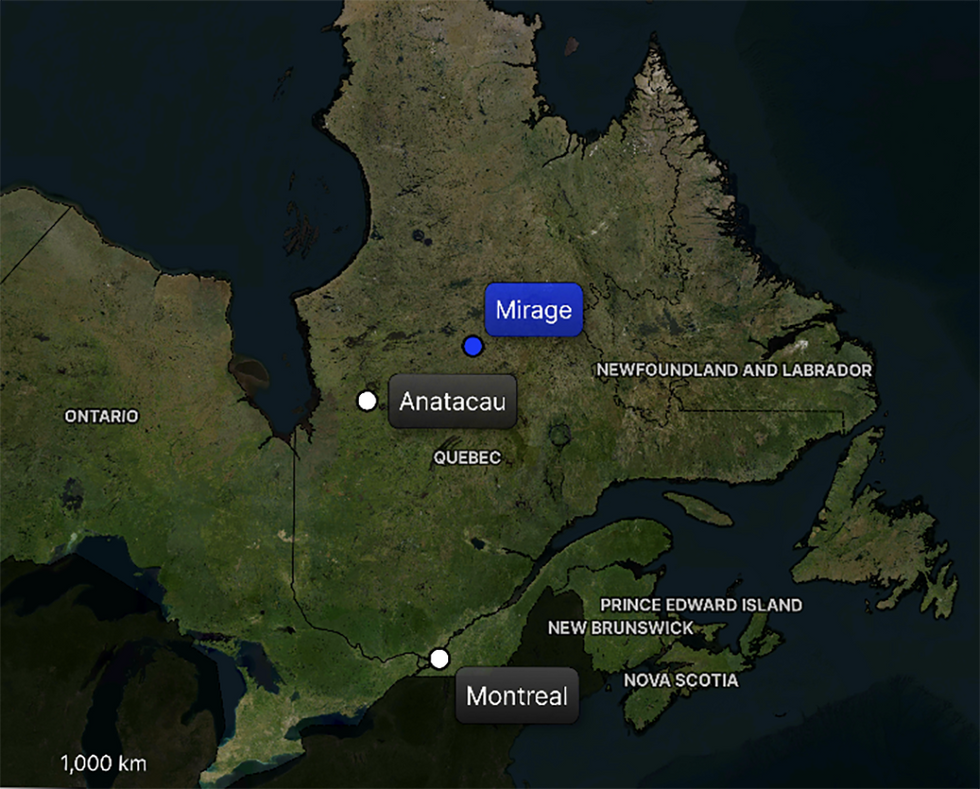
Brunswick’s exploration process begins with comprehensive data compilation and geological analysis to pinpoint promising target areas. Its experienced field teams then deploy traditional prospecting techniques—including bedrock mapping, sampling, and geophysical surveys—to validate targets on the ground. This hands-on approach has led to multiple new lithium discoveries and remains central to the company’s value creation strategy.
The company has launched an aggressive, regional-scale prospecting and mapping campaign across its extensive Greenland portfolio which will run for six weeks, supported by four field crews and two helicopters. The initial phase will see one team conducting detailed mapping and sampling around the Ivisaartoq spodumene discovery and surrounding areas. A second team will cover the expanded Nuuk and Paamiut licenses, including follow-up at the historical spodumene showing at Paamiut.
Starting in July 2025, fieldwork will pivot based on June results, with one crew continuing follow-up at Nuuk and Paamiut, and another moving to Disko Bay and Uummannaq. Findings will guide advanced exploration in August–September, including first-pass work at the newly acquired Hinksland project.
In Quebec, Brunswick Exploration has prioritized three key lithium projects in the Eeyou Istchee–James Bay region: Mirage, Anatacau, and PLEX with active drilling underway at Mirage following 2023 grassroots discoveries.
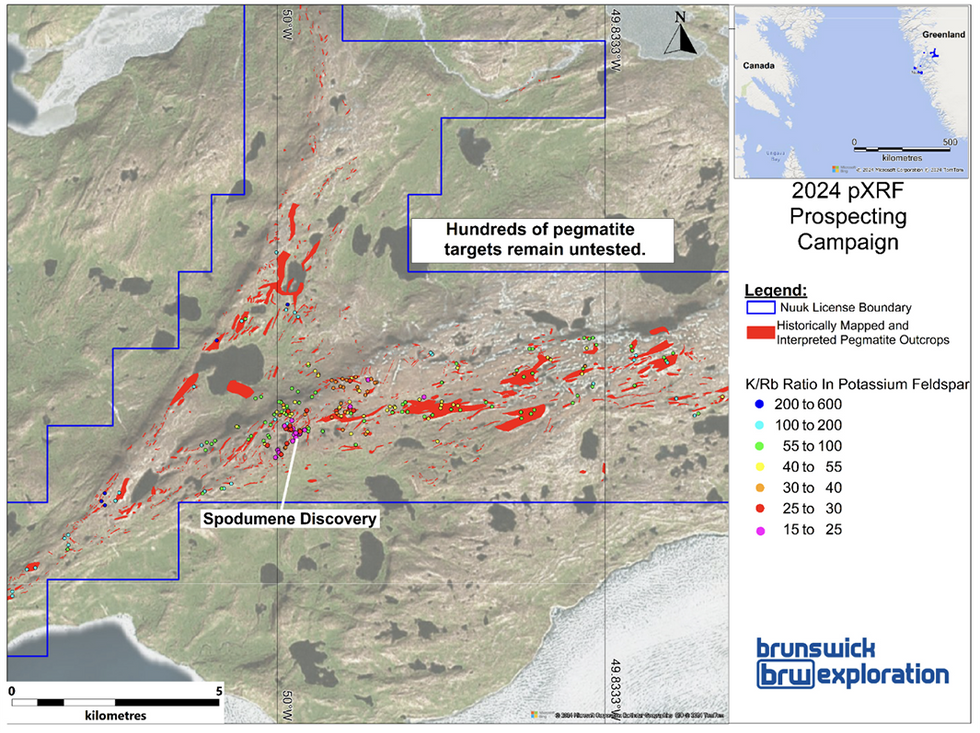
In 2024, the company made Greenland’s first lithium-bearing spodumene pegmatite discovery at the Ivisaartoq field under its Nuuk license—an area characterized by ancient Mesoarchean geology. Brunswick is now expanding its land position in both western and eastern Greenland to build on this breakthrough. In 2025, the company reported it had submitted license applications covering 20,785 hectares at Paamiut that include multiple metavolcanic amphibolite belts and nine mapped pegmatites 500–900 m in strike length, with approval pending. Brunswick had also applied for a 17,800-hectare Hinksland license in eastern Greenland containing over 50 mapped and interpreted pegmatite outcrops, including nine that are between 500 m and roughly 10,000 m in strike length, likewise awaiting government sign-off.
The exploration team is led by Executive Chairman Robert Wares, a renowned geologist and co-founder of Osisko Mining. Wares played a pivotal role in discovering the Canadian Malartic gold deposit, which became one of Canada’s largest gold producers. His leadership and exploration success provide strong technical guidance for Brunswick’s operations.
Company Highlights
- Brunswick Exploration (BRW) is a Montreal-based mineral exploration company listed on the TSXV under symbol BRW. The company is focused on grassroots exploration for lithium in Canada and Greenland, a critical metal necessary to global decarbonization and energy transition.
- This has generated one of the largest grassroots lithium portfolios globally.
- BRW's board includes Robert Wares, one of the founders of Osisko Mining.
- BRW was recognized as one of the Top 50 TSX Venture listed companies in 2023.
- The company has staked hundreds of untested prospective pegmatites measuring a minimum strike length of 500 meters and within 50 kms of infrastructure.
- In 2023, three discoveries were made in the Eeyou Istchee-James Bay region of Quebec at the Mirage, Anatacau Main and Elrond projects.
- In 2024, BRW announced a newly discovered pegmatite outcrop from its Nuuk License, making it the first confirmed lithium discovery in Greenland.
- In 2025 BRW bolstered its first-mover position in Greenland by staking about 38,500 ha across two new licenses — 20,785 ha at Paamiut (SW Greenland) hosting nine 500-900 m pegmatite trends and 17,800 ha at Hinksland (E Greenland) with over 50 mapped pegmatites, including nine 500-10,000 m trends — making BRW one of the country’s largest mineral-license holders and giving it hundreds of untested targets for lithium exploration.
Key Projects
Mirage Project
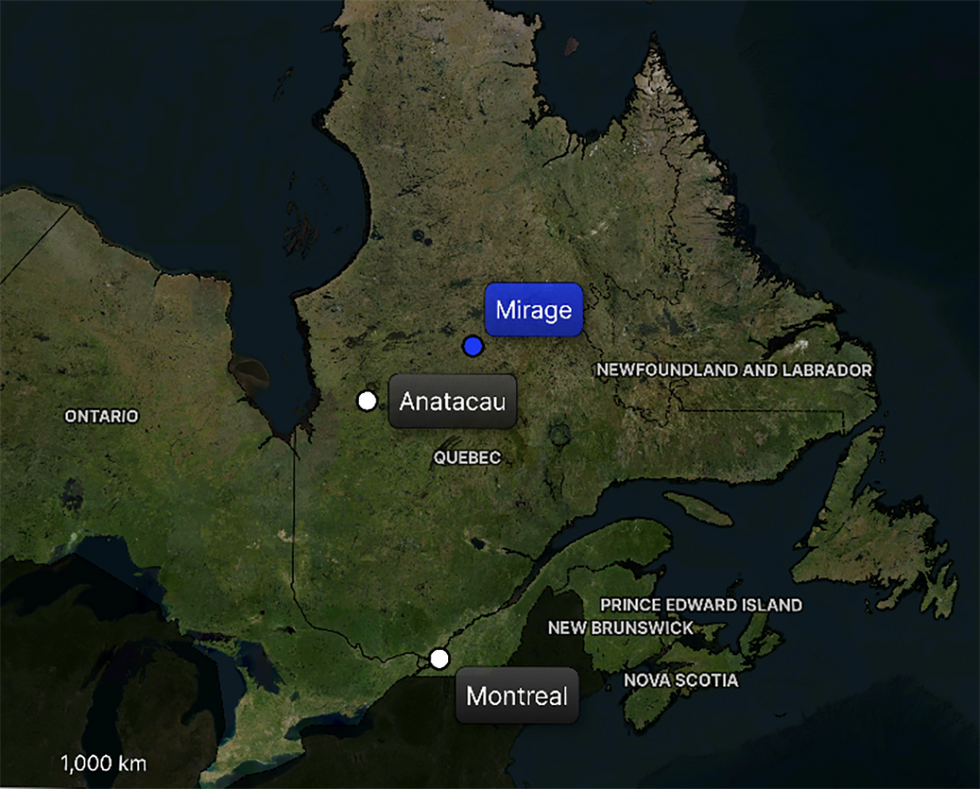
The Mirage Project consists of 427 claims covering 21,230 hectares (including both staked and optioned claims), situated approximately 40 km south of the Trans-Taiga Highway in Quebec’s James Bay region. The project was initially staked following insights from a geologist who explored the area for gold over two decades ago and documented numerous angular pegmatitic glacial boulders containing large, well-defined spodumene crystals, including one boulder measuring 8 x 4 x 3 meters.
In fall 2023, Brunswick Exploration uncovered multiple high-grade spodumene outcrops along a 2.5-km trend, alongside a distinct 3 km boulder train with different mineralogical characteristics, suggesting the presence of multiple lithium-bearing sources within the project area.
The company intersected 37 m at 1.14 percent Li₂O in hole MR-24-87 at the MR-3 dyke; 36 m at 1.51 percent Li₂O in hole MR-24-102 within the Stacked Dyke area where the same hole also cut thirteen additional spodumene-bearing dykes and 28 m at 1.32 percent Li₂O in hole MR-24-101 at the MR-6 dyke, together extending the combined MR-3–MR-6–Stacked Dyke swarm to more than 1 km by 450 m. In the past drillings, Brunswick intercepted 1.55 percent and 1.64 percent Li₂O at 93.45 m and 69.3 m respectively at the MR-6 dyke The project continues to show excellent continuity and scale, with stacked dykes and new zones being delineated through ongoing drilling.
The winter 2025 drill program covering over 5,000 meters is designed to test new extensions to MR-3, MR-4, and MR-6 dykes, as well as additional targets within the broader Central Zone. Mirage is quickly emerging as a potential high-grade, large-tonnage lithium system.
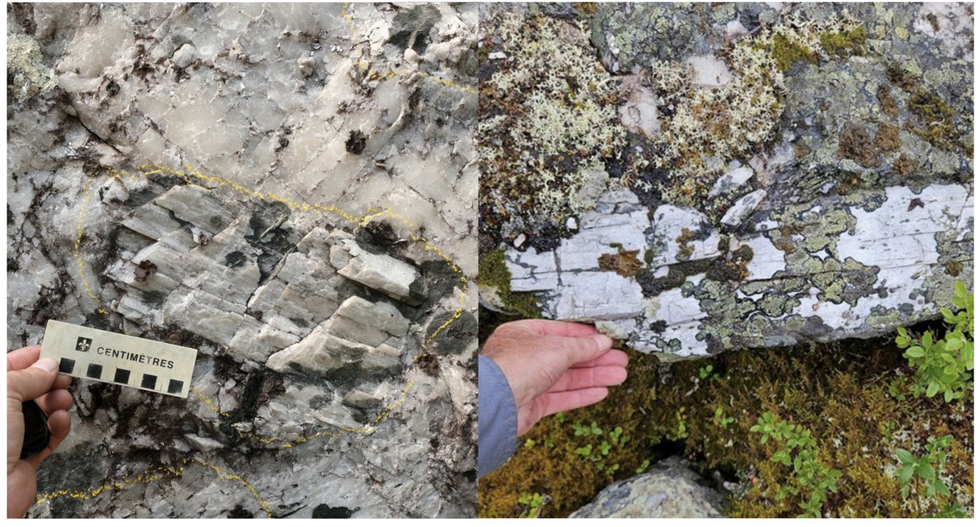
Spodumene crystals at Mirage are massive and white to pale grey, both at the surface and in the core.
In 2025, BRW has continued to advance Mirage through additional drilling and metallurgical testing. The winter drill program intersected 36 meters at 1.51percent Li2O in the Stacked Dyke area and 28 meters at 1.32 percent Li2O at the MR-6 dyke, significantly extending these pegmatites along strike. This drilling confirms that the MR-3, MR-6 and Stacked Dyke systems form a major spodumene-bearing pegmatite swarm now traced over ~1,000 by 450 meters and open in multiple directions. Phase 1 metallurgical results indicate the potential for a dense media separation (DMS)-only flowsheet (no flotation required), capable of producing a clean spodumene concentrate grading ~5.5–5.7 percent Li2O with up to 76 percent recovery and low impurities.
PLEX Project
The company is also advancing the early-stage Poste Lemoyne Extension (PLEX) project, located along the La Grande shear zone approximately 75 km west of Patriot Battery Metals’ Corvette project. PLEX consists of 375 claims covering 19,175 hectares and remains a target for future prospecting campaigns.
Anatacau
Comprising the Anatacau Main and Anatacau West projects, these assets are under an option agreement with Osisko GP, a subsidiary of Osisko Development, under which Brunswick Exploration can earn a 90 percent interest in the projects. The Anatacau property is located just east of Rio Tinto (NYSE:RIO) recently acquired James Bay Lithium deposit (previously known as the Cyr deposit), previously owned by Arcadium (NYSE:ALTM) which has a total mineral resource of 110.2 million tons (Mt) at 1.30 percent lithium oxide and a total ore reserve of 37.3 Mt at 1.27 percent lithium oxide.
BRW completed a maiden drill program at the Anatacau West property totalling 3,712 meters. 17 of the 18 drilled holes intersected spodumene mineralization that generated up to 26.5 metres at 1.51 percent Li2O.
In the summer of 2023, Brunswick discovered a significant lithium pegmatite outcrop, measuring at least 100 meters long by 15 meters wide known as the Anais showing in Anatacau Main. The outcrop is within a larger cluster of pegmatite dykes all of which contain high-grade lithium mineralization.
This discovery is located 22 km east of Anatacau West and Rio’s James Bay project along a large-scale E-W deformation corridor which is host to the known lithium-bearing pegmatite dykes in the region.

Greenland
Brunswick Exploration is now one of Greenland’s largest mineral license holders and the only company actively exploring for lithium in the country, capitalizing on a clear first-mover advantage. With supportive regulations, highly prospective geology, and excellent outcrop exposure, 2025 is set to be a breakthrough year as the company launches a major lithium exploration campaign.
A six-week regional program begins in June, with four field crews and two helicopters deployed across Brunswick’s vast land package. One team will focus on the Ivisaartoq spodumene discovery, while another targets the Nuuk and Paamiut licenses. In July, follow-up work will continue at Nuuk and Paamiut, while a second team begins prospecting at the Disko Bay and Uummannaq properties.
Initial results will guide advanced exploration phases in August and September across high-priority targets.
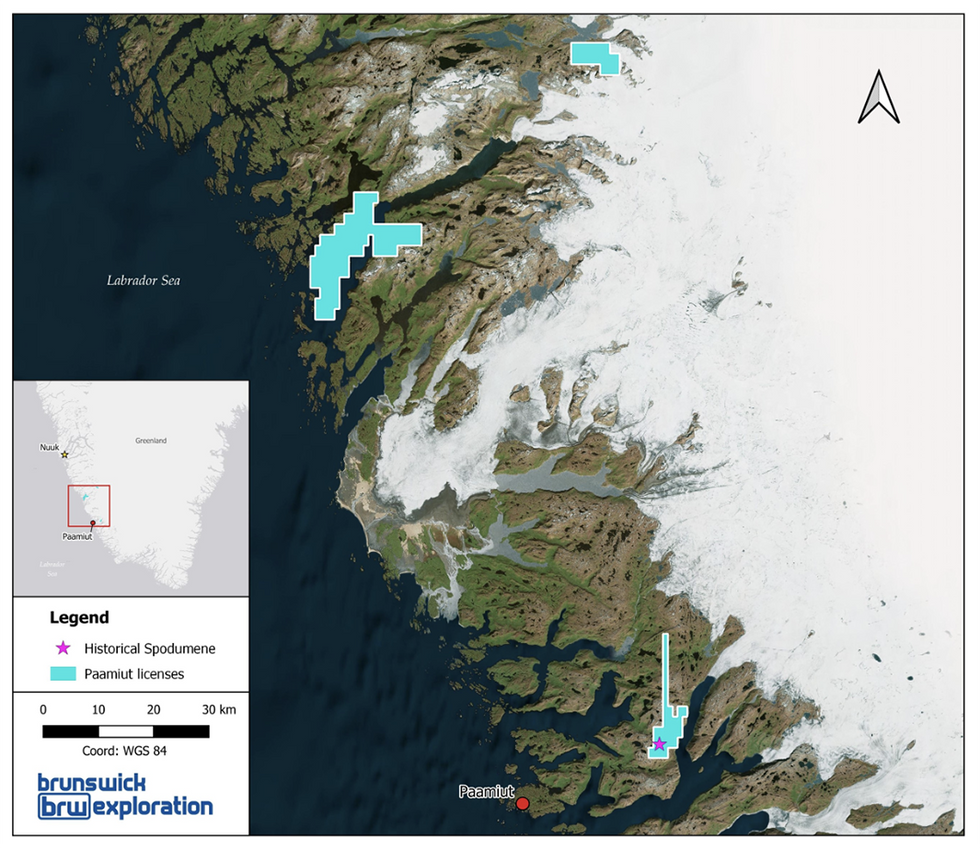
2025 Paamiut license area
Brunswick Exploration has applied for new licenses covering 20,785 hectares, approximately 90 to 130 km northeast of Paamiut, a coastal town about 260 km south of Nuuk. The area lies within the Bjornesund tectonic block of the North Atlantic Craton, a geologically favorable region comprising tonalitic and granodioritic orthogneiss and Mesoarchean metavolcanic amphibolite belts.The newly staked ground includes multiple amphibolite belts up to 1.5 km wide and 15 km long, along with nine mapped and interpreted pegmatite targets ranging from 500 to 900 meters in strike length. License applications have been submitted and are currently pending final government approval
Nuuk Expansion
Brunswick Exploration’s Nuuk holdings include the Ivisaartoq spodumene discovery within the Ivisaartoq belt. The company has applied to stake the adjacent Ujarassuit amphibolite belt, which is up to 1 km wide and 40 km long. Additional claims have been secured within the Fiskefjord Complex, located 95 km north of Nuuk and 75 km southeast of Maniitsoq, covering amphibolite belts up to 4.5 km wide and 20 km long. The newly acquired and applied-for claims span 33,138 hectares and host hundreds of mapped and interpreted pegmatite outcrops, including six targets with strike lengths between 500 and 2,000 m.
Disko Bay
The Disko Bay licenses are located roughly 30 to 80 kms from the coastal city of Ilulissat, which is the third largest city in Greenland. The licenses are near multiple seaports and container terminals, including Ilulissat. The area is situated within the Aasiaat domain, part of the Paleoproterozoic Nagssugtoqidian Orogen, sandwiched to the south by the Archean North Atlantic Craton and to the north by the Archean Rae Craton. The Orogen extends west into the Trans-Hudson orogeny of Canada that continues to the lithium deposits near Snow Lake Manitoba and the Black Hills of South Dakota.
Multiple amphibolite and metasedimentary belts were acquired with some belts being over 20 km in strike length. The new claims have hundreds of mapped and interpreted pegmatite targets with a total license area of 49,639 hectares.
Uummannaq
The licenses are located roughly 70 km from the coastal city of Uummannaq, about 80 km north of Ilulissat. Uummannaq has a population of about 1,660, an airport and a ferry terminal as well as a nearby container terminal. The area is located within the Archean Rae Craton that is intermixed with the Paleoproterozoic Rinkian fold-thrust belt, both of which are in contact with the Paleoproterozoic Nagssugtoqidian Orogen to the south.
The new license contains multiple amphibolite and metasedimentary belts with dozens of mapped and interpreted pegmatites with a total license area of 9,770 hectares.
Management Team
Robert Wares - Executive Chairman
Robert Wares is a professional geologist with more than 35 years of experience in mineral exploration and development. He was responsible for discovering the Canadian Malartic bulk tonnage gold mine, which was subsequently developed by Osisko Mining into one of Canada's largest gold producers. Wares was a co-winner of the Prospectors and Developers Association of Canada's "Prospector of the Year Award" for 2007. He was also named one of the "Mining
Men of the Year" for 2009 by the Northern Miner. He has a Bachelor of Science and an honorary doctorate in earth sciences from McGill University.
Killian Charles - President and CEO
From 2017 to 2021, Killian Charles worked as VP of corporate development for Osisko Metals. Charles was previously the manager of corporate development at Integra Gold Corp, which was an advanced-stage gold development company until it was acquired by Eldorado Gold in July 2017. He worked as a mining analyst at Industrial Alliance Securities and Laurentian Bank Securities. Charles covered small and mid-cap exploration and production companies as a mining analyst. Charles holds a Bachelor of Science with a major in Earth and planetary sciences from McGill University.
Anthony Glavac - CFO
Anthony Glavac has more than 17 years of experience in financial reporting, including over 12 years in the mining industry. Since August 2017, Glavac has served as vice-president, and corporate controller for Falco Resources, and previously served as director, financial reporting and internal controls at Dynacor Gold Mines. Glavac spent 10 years at KPMG, working with both public and private companies, providing audit, taxation, strategic advisory and public offering services. Glavac is also involved with other public companies in the mining industry.
Simon Hébert - Vice-president, Development
Simon Hébert is a professional geologist with over 13 years of experience in mineral exploration, having begun his career with Virginia Mines and Osisko Mining. He has worked on numerous metallogenic projects across Baie-James, Nunavik, and the Northwest Territories. In 2019, he helped form NQ Mining Investment, becoming its general manager in 2023. A member of the Ordre des Géologues du Québec since 2012, Hébert also serves as vice president of the AEMQ and is chair of the Table Jamésienne de concertation minière. He holds a BSc in Geology from Université Laval.
François Goulet - Exploration Manager, Quebec
François Goulet holds a master’s degree in structural geology from UQÀM and has extensive exploration experience in James Bay and internationally. He was recently president and CEO of Harfang Exploration, a gold project generator in Quebec. Goulet has worked with companies including Virginia Mines, Unigold, Maya Gold & Silver, the Canadian Malartic Partnership, and Glencore Canada. He is a board member of the AEMQ and a registered geologist with the Ordre des géologues du Québec since 2011.
Charles Kodors - Exploration Manager, Atlantic Canada
Charles Kodors is the Manager, Atlantic Canada at Brunswick Exploration Inc. and has been with the company since January 2021. Having 15 years of experience in the mining and exploration industry, he most recently served as an exploration manager for Osisko Metals and a senior exploration geologist for Kirkland Lake Gold. Kodors received his B.Sc. from Brock University and is a registered professional geologist within the provinces of New Brunswick, Newfoundland, Nova Scotia, Ontario, Quebec, Manitoba and Saskatchewan.
Shayaan Belluzzo – Corporate Secretary
Ms. Shayaan Belluzzo is a seasoned Corporate Secretary with over 8 years of experience of board governance and compliance, corporate restructuring matters for various global entities and investment vehicles, focusing on corporate regulatory and corporate governance best practices, and providing strategic legal support. Recently, Belluzzo also held key roles as Corporate Secretary of Windfall Mining Group and Assistant Corporate Secretary of Osisko Mining, supporting both companies during a $2.16 billion acquisition. Ms. Belluzzo’s diverse industry experience stems from her work in global investment, asset management, and law firms, including McCarthy Tétrault LLP.
Keep reading...Show less
11 August
Alkane Completes Merger with Mandalay Resources, Begins Trading on TSX
Alkane Resources (ASX:ALK,TSX:ALK) said on August 5 that it has closed its merger with gold- and antimony-focused Mandalay Resources. The all-share transaction was valued at AU$559.1 million.
First announced in April, the deal creates a combined company that is projected to produce about 160,000 gold equivalent ounces in the 2025 fiscal year, with the potential to rise to 180,000 ounces the following year.
Alkane has acquired all of Mandalay's issued and outstanding common shares, with former Mandalay shareholders and existing Alkane shareholders respectively owning approximately 55 percent and 45 percent of the new entity.
“This merger represents a significant step forward for both companies. By combining our complementary portfolios, we have created a stronger, more resilient platform with the scale and financial flexibility to pursue long-term growth,” said Alkane Managing Director and CEO Nic Earner in a press release.
Alkane began pursuing a TSX listing following the merger announcement. The company began trading on the TSX under the symbol "ALK" on August 7, with the ASX remaining as its primary listing.
Mandalay shares officially delisted from the TSX on August 6, the day after the merger closed.
Australia remains Alkane’s focus, with its Tomingley gold project in New South Wales holding the potential to produce 70,100 ounces of gold this year, forming a substantial part of the company’s projected output.
According to Alkane’s recent Diggers & Dealers presentation, Mandalay’s Costerfield gold-antimony mine, located in Victoria, Australia, is also central to the combined entity’s current focus.
The company said Costerfield is one of the world’s richest gold and antimony mines. It is expected to produce 49,400 gold equivalent ounces during the 2025 fiscal year. Björkal, an open-cut gold mine in Sweden owned by Mandalay, also forms part of the transaction. Its output is projected at 41,400 ounces of gold for 2025.
“With a diversified production base, broader exploration pipeline and enhanced trading liquidity, (we are) well positioned for a market re-rating,” added former Mandalay President and CEO and Frazer Bourchier.
Bourchier is now a non-executive director at Alkane.
The combined company will operate as Alkane and remain headquartered in Perth.
Don’t forget to follow us @INN_Resource for real-time news updates!
Securities Disclosure: I, Gabrielle de la Cruz, hold no direct investment interest in any company mentioned in this article.
Keep reading...Show less
11 August
Underground Production Commences Reward Gold Mine Project
Latest News

Sign up to get your FREE
Manuka Resources Investor Kit
and hear about exciting investment opportunities.
- Corporate info
- Insights
- Growth strategies
- Upcoming projects
GET YOUR FREE INVESTOR KIT
Latest Press Releases
Related News
TOP STOCKS
American Battery4.030.24
Aion Therapeutic0.10-0.01
Cybin Corp2.140.00



